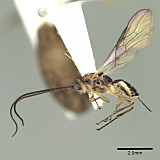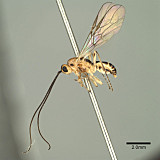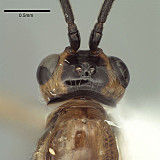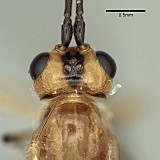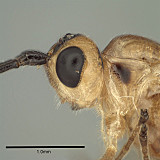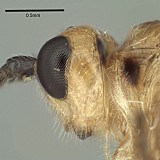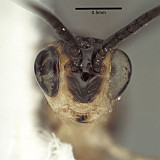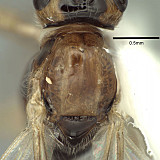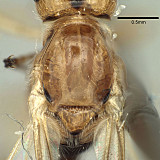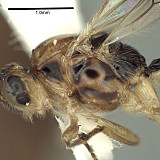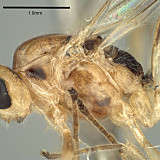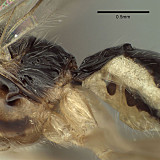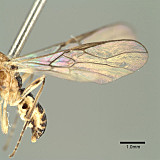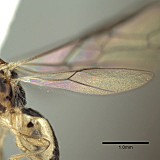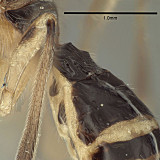Opius marshi Wharton, 2013
Holotype: Female, deposited in UNAM.
Unlike most other Opiinae, the occipital and hypostomal carinae meet well above the base of the mandible in members of the godfrayi species group, continuing to the mandible as a single, flange-like ridge. They would thus key to Apodesmia Foerster in Li et al. (2013), though differing notably from the type species of Apodesmia in the absence of a midpit on the mesoscutum and absence of a sculptured precoxal sulcus, among other features. Some members of the godfrayi species group will key to Opius (Pendopius Fischer) in the subgeneric keys of Fischer (1972, 1999), but differ from the type species of Pendopius in lacking a basal tooth or lobe on the mandible. Others will key to Opiothorax Fischer, the type species of which similarly has a basal lobe on the mandible.
While the fusion of the occipital and hypostomal carina ventrally in mambers of the godfrayi species group suggests a relationship to Apodesmia, sculptural characteristics of the mesosoma (especially notauli, pronotum, precoxal sulcus, and propodeum) and metasoma (T1) as well as the position of fore wing 2CUb suggest a closer relationship to members of the baderae species group.
There are no specimens currently determined for this OTU, or those specimens determined for this OTU are not yet mappable.
MEXICO: Chiapas
Chiquihuites, ~15°05’N
92°06’W, NW Union Juarez
Second label:
S slope Volcan Tacana,
1800–2000 m, 31.X.1993
A.L.Norrbom & C.Estrada
Third label:
reared ex. stem gall
Squamopappus skutchii
(Blake) Janson, Harriman
& Urbatsch (93M11)
Fourth label: reared ex stem
gall of Eutreta apicata
(Tephritidae)
This material is based upon work supported by the National Science Foundation under Grant Numbers DEB 0949027 and DEB 0328922 with REU supplement 1313933.
Any opinions, findings, and conclusions or recommendations expressed in this material are those of the author(s) and do not necessarily reflect the views of the National Science Foundation.

